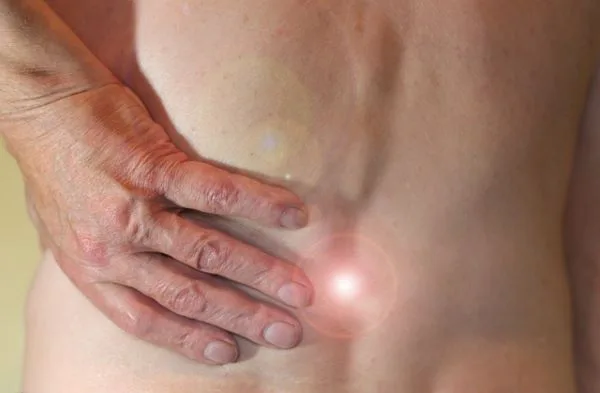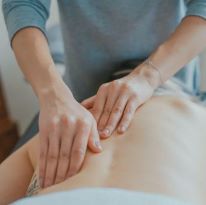Causes, Symptoms, and Treatments for Spinal Issues

You’ve probably heard of spinal issues, but do you truly understand the causes, symptoms, and treatments available? These health problems don’t discriminate, they can affect anyone, anywhere.
Today, this article is going to journey into the depths of this topic to shed light on what you need to know about spinal issues. Ready to improve your understanding and safeguard your well-being? Let’s dive in.
Herniated Disc
A herniated disc, also known as a slipped or ruptured disc, typically results from age-related wear and tear, or an injury that puts pressure on the spine, causing the disc’s soft, jelly-like center to push out through a tear in its tougher exterior. These orthopedic surgeons Atlanta explain that common symptoms include arm or leg pain, numbness, tingling, and muscle weakness. Pain intensity may increase with movements or even while coughing, and it often worsens at night.
Non-surgical treatments, such as physical therapy, anti-inflammatory medication, or cortisone injections, often prove effective. In severe cases, where symptoms persist despite non-surgical treatment, surgery might be necessary to remove the herniated part of the disc and relieve pressure on the nerve. Always consult a healthcare professional for appropriate diagnosis and treatment.
Spinal Stenosis
Spinal stenosis is often a result of aging, as the spine’s cushioning starts to deteriorate over time. It can also be caused by conditions such as arthritis, herniated discs, or spinal injuries. This condition is characterized by a narrowing of the spaces within the spine, which can cause pressure on the nerves.
Symptoms may include back or neck pain, numbness or tingling in extremities, muscle weakness, and difficulty walking or maintaining balance. However, some individuals may not exhibit any symptoms.
Treatment strategies depend on the severity and location of the stenosis. Non-surgical treatments may include medication to relieve pain and inflammation, physical therapy to improve strength and balance, and steroid injections to reduce inflammation. In severe cases, surgery may be recommended to create additional space for the spinal cord or nerves. As with any health issue, it’s essential to consult a healthcare professional for accurate diagnosis and treatment.
Scoliosis
This common spinal issue has some obvious symptoms that will help you recognize it. These are the following:
- Uneven shoulders
- Uneven hips
- Uneven waist
- Asymmetrical ribcage
- Titled head
- Muscle imbalance
- Back pain
- Limited mobility
- Visible curvature of the spine
- Fatigue or discomfort
While the exact cause is unknown, it’s believed to be due to genetic factors as the disorder tends to run in families. Depending on the degree of curvature, scoliosis can present mild to severe health issues. Treatment options vary, largely based on the severity of the curvature and the patient’s age. Mild scoliosis may simply be monitored for progression, with regular check-ups.
Moderate to severe curvatures might require bracing to halt the progression of the curve. In severe cases, surgical treatment may be necessary to correct the curve and prevent further progression. As in all cases, it’s crucial to consult with healthcare professionals for appropriate diagnosis and treatment.
Degenerative Disc Disease
Degenerative Disc Disease is a condition you may encounter as you age when your spinal discs – shock absorbers between the vertebrae that facilitate bending and twisting – naturally wear down. Pain, instability, and reduced flexibility can ensue as the discs lose hydration and become thinner. You may experience discomfort in your neck or lower back, which can radiate to your arms or legs.
Activities like lifting, twisting, or bending may worsen your symptoms, along with prolonged sitting or standing. Rest may alleviate these symptoms, and severe, persistent pain is relatively rare. To manage Degenerative Disc Disease, you can take over-the-counter pain relievers or engage in low-impact activities like swimming or yoga. Physical therapy exercises may be beneficial too. If your symptoms are severe, treatments such as surgery or spinal fusion might be an option.
Osteoporosis-related Spinal Fractures
Osteoporosis-related spinal fractures, often referred to as vertebral compression fractures stem primarily from the progressive bone-thinning condition known as osteoporosis. This degenerative disease weakens bones, making them susceptible to fractures even from minor strains or falls. Symptoms can be elusive, ranging from no noticeable signs to severe back pain, a reduction in height, or a stooped posture.
Initial treatment often involves pain management, typically with over-the-counter pain relievers or prescription medication. Physical therapy may be recommended to strengthen the back muscles and improve posture. In cases where pain persists or the fracture leads to spinal instability, surgical interventions such as vertebroplasty or kyphoplasty may be considered. These procedures aim to stabilize the fracture and alleviate pain, but it’s crucial to consult a healthcare professional for proper diagnosis and treatment.
Sciatica
Sciatica, typically caused by irritation, inflammation, pinching, or compression of a nerve in the lower back, often results from a herniated disc, spinal stenosis, or a bone spur on the spine. It manifests as pain radiating along the path of the sciatic nerve, which extends from the lower back through the hips and buttocks and down each leg.
Symptoms commonly include lower back pain, hip pain, burning or discomfort in the leg, and numbness, difficulty moving, or weakness in the leg or foot. Treatment for sciatica focuses on relieving pain and inflammation. This can involve over-the-counter pain relievers, anti-inflammatory medications, physical therapy, and exercises to improve posture and flexibility. In severe or persistent cases, surgical intervention may be required.
Osteoarthritis of the Spine
This issue is typically the result of the aging process but can also occur from injury or genetic factors. Osteoarthritis involves the breakdown of cartilage, causing the bones of the joints to rub together, which can lead to inflammation and pain. Symptoms often include back or neck pain, stiffness, and reduced flexibility in the affected areas. In severe cases, this condition can lead to nerve compression causing numbness, tingling, or weakness in the arms or legs.
Lifestyle adjustments, such as maintaining a healthy weight and engaging in light exercise, can help manage the symptoms. Over-the-counter pain relievers and anti-inflammatory drugs can also aid in reducing pain and inflammation. Severe cases might require physical therapy or surgical procedures like spinal fusion or joint replacement.
In your journey to better understand spinal issues, you’ve come across a wide array of conditions, from herniated discs to osteoarthritis of the spine. Remember, each one has its unique causes, symptoms, and treatments. It’s crucial to consult with a healthcare professional if you’re experiencing any discomfort or recognizable symptoms. Armed with this knowledge, you are better equipped to maintain spinal health and address any arising issues promptly.






